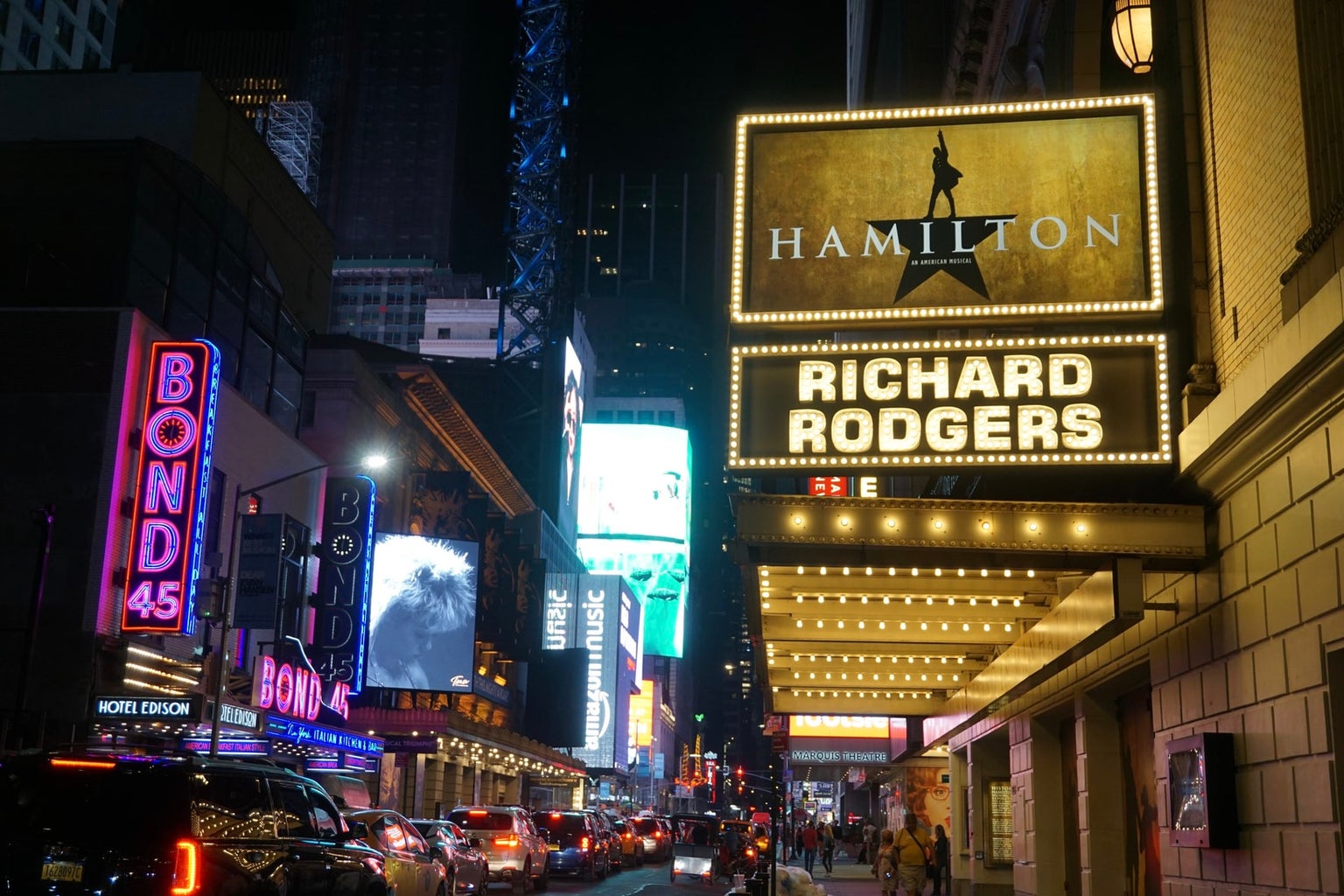Like any good musical theater fan, I was thrilled to hear that Broadway will be reopening September 4th. Local theaters have followed suit, and personally, I can say I’m planning to see Hairspray this fall and Hadestown next summer. I have missed live performances more than anything since the start of quarantine, and I’m prepared to be overly emotional at the first (couple) shows I’m able to see as we move towards a post-COVID life.
I’ve loved live performances since before I can remember. My family laughs whenever they remember three-year-old me getting up and trying to dance in the aisle when we saw The Nutcracker. I’ve been extremely lucky that my aunt loves musical theater as well; I got to see Wicked when I was nine, and after that, we would go to see a musical every winter as a Christmas gift. I am fortunate enough that I have a couple hundred dollars to spare once a year, so since going to college, I’ve been able to see the traveling cast of Hamilton and Wicked; because of Seattle Rep, I’ve been able to see In The Heights, The Woman and Black, and Nina Simone: Four Women with their incredible student discount. I recognize that not everyone can afford to see the traveling casts of Broadway musicals, or even of local theaters like Seattle Rep. Even fewer people are able to go to New York to see a musical on Broadway. I myself have only been able to go once, on a student trip I had the privilege of taking when I was in eighth grade. We saw Spiderman: Turn Off the Dark, and I still consider it one of the best musicals I’ve ever seen because it was the first and only time I’ve ever attended a Broadway musical. Through hindsight the musical becomes even better, because I got to see Peter Parker played by Reeve Carney, who now plays Orpheus in Hadestown (one of my all time favorite musicals). In my best daydreams, I’m able to plan trips to New York to see my favorite musicals performed at Broadway, but I know that realistically, it will be years before I can even realistically consider the possibility.

Of course, making movies out of plays isn’t unheard of. That’s why we have Annie and Chicago and Les Misérables, and soon we’ll have In The Heights. Even filming live performances is conceivable; the iconic Phantom of the Opera was filmed live at the Royal Albert Hall, and Hamilton was filmed over a series of shows on Broadway and released to us to stream last summer. You may notice a common factor among the plays I listed: two plays were written by Lin Manuel Miranda. I adore and respect Miranda for a lot of reasons, one of them being that he allowed for Hamilton to be filmed so that fans everywhere had the ability to see it with the original cast. Even if you don’t like or have never seen Hamilton, you’ve probably heard of it. To say it was popular in 2016 is an understatement. Hamilton revived some people’s love of theater, aided in others, and introduced others still to a love of theater. I was so lucky to have the ability to see it in 2018 when the traveling cast came to Seattle, and when it was released last summer, I got my whole family to sit down and watch it with me (and everyone loved it). The movie adaptation of In The Heights was also supposed to come out last summer, but it was pushed back because of COVID. Now, we have a set release date for June 11th, and I can confirm that the second it comes out, I’ll be watching it (and sobbing). I can only hope Broadway notices everyone’s reaction to Hamilton coming out, and they’re still noticing our excitement for In The Heights.
As Broadway prepares to re-open for the first time in a year and a half, I hope they’re really considering filming more live performances, knowing that our excitement for a filmed performance is no match for our excitement for being able to see a live performance. Filmed performances will only make Broadway more accessible, because people who can’t afford to go to Broadway or who can’t afford to see a traveling cast will be able to see something. I’m not foolish enough to ignore that money plays a major role in decisions entities like Broadway make; making performances more accessible by filming them will not only please fans and let us watch our favorite musicals whenever we want, it will also make Broadway more money, because they’ll be getting money from people who can attend live performances and people who are streaming filmed ones.
Both Miranda’s Hamilton and In The Heights also deal with another major issue in Broadway: racism. In The Heights tells the story of a neighborhood of Hispanic immigrants and their children and their struggle to survive the gentrification of their neighborhood. In the song “Carnaval del Barrio,” the neighbors sing about the Cuban, Dominican, Mexican, and Puerto Rican flags, making it more than the story of an immigrant(s) from only one country. It’s my favorite song, and this inclusivity is a big part of why. Hamilton is a little different; it tells the story of Alexander Hamilton and his journey to becoming the first Secretary of Treasury in the newly formed United States of America. Miranda saw telling this story as an opportunity to make an important statement: every single founding father was descended from immigrants. Instead of casting white men to play the founding fathers, Miranda exclusively cast people of color in Hamilton (with the exception of Jonathan Groff, who played King George—and even this was a deliberate and fitting decision). This meant we had a Black George Washington, a Black Thomas Jefferson, a Black James Maddison, a mixed John Laurens, a Puerto Rican Alexander Hamilton, a Black Angelica Schyeler, a mixed Peggy Scheyler, and a mixed Eliza Scheyler/Hamilton. These actors didn’t look like their historical characters, but Miranda’s decision to exclusively cast people of color made Hamilton better reflect the world we live in, and acted as a reminder that the founding fathers were foreigners to this country as well. (Here, Miranda played on the racist phrase bigots love to spew, telling all people of color, even the ones born in the United States, to “go back to their country.”)
Unfortunately, decisions like Miranda’s are rare. The preferential treatment of white people in Broadway runs far deeper than overwhelmingly casting white people in roles onstage. In the 2017-18 season (the most recent season analyzed), 80% of Broadway writers and 94% of directors were white. Likewise, all 41 theaters that make up Broadway are owned by white people, and the artistic directors of all 4 of Broadway’s non-profit theaters are white. According to Forbes, “the number of Black producers who have ever been granted a Broadway theater can be counted on two hands”—for Asain and Latine producers (combined!), we only need one hand. There are a number of groups that have formed to try to combat this, such as the Broadway Advocacy Coalition. Actors of color, such as Eva Noblezada and Nikki Walker, are constantly talking about the issue and their experiences. Many of us have spent the last year learning how to be better, more authentic allies. Our work is far from over, and for theater fans, it’s important to bring the same energy, determination, and willingness to listen to this conversation about Broadway.
As Broadway and theater fans prepare to begin attending live shows, we should be listening to actors of color who share their experiences, and hold Broadway (and theater in general) accountable. Over the past year, racism has been a major topic in nearly every facet of life. As we prepare to reopen, we should be looking to see which organizations are willing to make real, long-lasting change, and which were being performative activists during the COVID shutdown.



